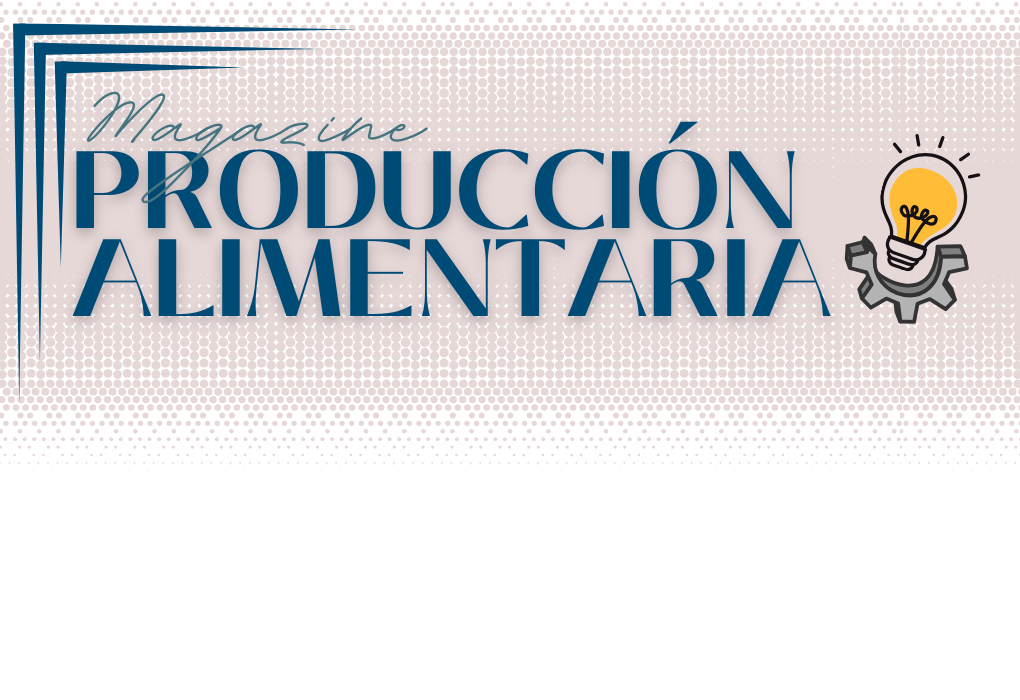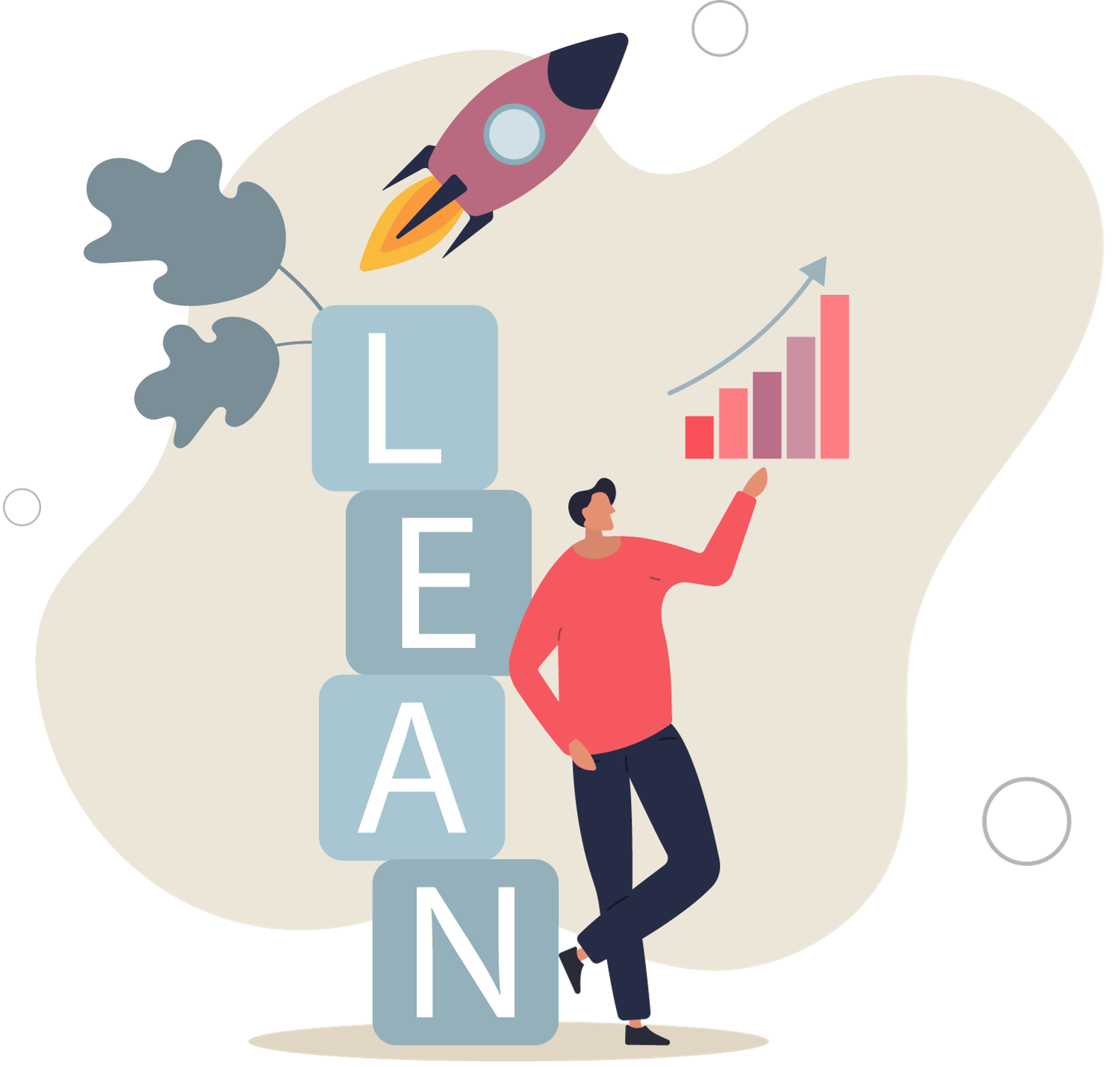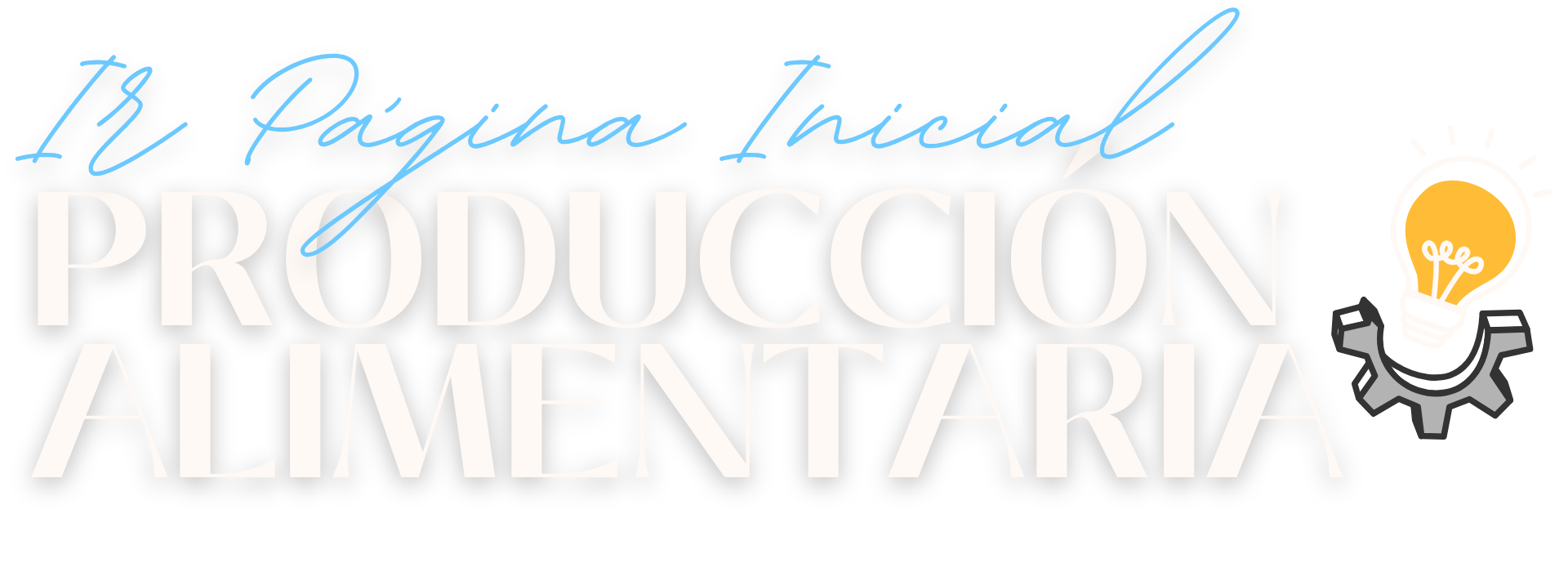
Ir juntos es un comienzo;
Mantenerse juntos es progreso;
Trabajar juntos es el éxito.
Henry Ford


Ir juntos es un comienzo;
Mantenerse juntos es progreso;
Trabajar juntos es el éxito.
Henry Ford
Lean Manufacturing: Caminando hacia la Eficiencia Desafiando los Desperdicios

Autor: admin

¡Imagínate un mundo donde todo se hace con la máxima eficiencia y sin desperdicio! Ese es el objetivo de la filosofía de producción conocida como Lean Manufacturing. Es la brújula que guía a las empresas, ayudándoles a mejorar su productividad y eficiencia.
La historia de la metodología se remonta al siglo XIX, cuando el Sr. Sakichi Toyoda, introduce una pequeña automatización a un telar. ¿La meta? Parar la máquina y alertar a los trabajadores si algo iba mal. ¡Y vaya si funcionó! No solo se resolvían los problemas más rápido, sino que además se necesitaba menos personal para mantener la planta en marcha, ¡lo que significó un aumento de la productividad!
En la actualidad, muchas empresas en todo el mundo han incorporado los principios LEAN en sus instalaciones. Consecuentemente, es vital que todos los miembros de estas empresas colaboren en la promoción y el impulso del cambio dentro de sus organizaciones. Después de todo, las personas representan uno de los pilares fundamentales que respaldan esta filosofía.
¿De qué se trata el Lean Manufacturing? Pues, de darle al cliente lo que quiere mientras se evita el despilfarro de recursos. En otras palabras, ¡menos es más! Todo lo que no le aporte valor al producto es un desperdicio desde la perspectiva del cliente. La filosofía Kaizen es la base de estos principios, la cual se traduce como «mejora continua».
Si contrastamos la mentalidad de antes con la mentalidad Lean, antes, todo se resumía en: PRECIO DE VENTA= COSTES + BENEFICIOS. ¡Pero ahora, todo ha cambiado! Los beneficios no se miden por el precio de venta, sino por el VALOR GENERADO menos el COSTE.
¿Cuáles son los 7 principios del Lean Manufacturing?
- Despídete del desperdicio (Muda): ¡Adiós a la sobreproducción, inventario excesivo, tiempo de espera, transporte innecesario y procesos defectuosos!
- El cliente es lo primero: Enfócate en lo que realmente le importa al cliente y deja atrás todo lo que no aporta valor real.
- Flujo Continuo (Just in Time): Haz que todo fluya suavemente, sin interrupciones, reduciendo los tiempos muertos y el inventario.
- Produce para la demanda real: ¡Adios a la sobreproducción! Produce solo lo que necesitas y cuando lo necesitas.
- Busca la perfección (Kaizen): No te conformes, busca la mejora continua en todos los procesos y haz que todos en la empresa se involucren.
- Flexibilidad ante todo: Diseña sistemas que puedan adaptarse rápidamente a cambios en la demanda del cliente o en los procesos de producción.
- Tus empleados son la clave: ¡Escucha a tus empleados y dales la oportunidad de desarrollar sus habilidades mientras participan en la mejora continua!
Con estas técnicas y herramientas, ¡tu producción va a volar!
- Kanban: El sistema que te muestra todo de un vistazo y te ayuda a optimizar el flujo de trabajo.
- Indicadores TPM: ¡Los indicadores son esenciales! Si no mides algo, no puedes controlarlo, y si no controlas algo, no puedes manejarlo.
- 5S: ¡Orden y limpieza son la clave! Este método te ayudará a mantener un espacio de trabajo eficiente.
- Andon: ¡Atento! Este sistema visual te indicará el estado del proceso de producción.
- SMED (Cambio Rápido de Herramientas): ¿Perdiendo tiempo cambiando buscando las piezas para la realización de cambios de formato en tus líneas de trabajo? ¡No más! Esta técnica te ayudará a reducir los tiempos de cambio.
- Poka-Yoke (Prevención de Errores): ¡A prueba de errores! Implementa dispositivos o procesos para prevenir defectos.
- Causa raíz: Si quieres solucionar un problema, no te quedes en la superficie, ¡ve a la raíz del asunto! Identificar la causa real es la clave para prevenir que el problema te persiga por siempre.
- AMFE: El Análisis de Modo y Efecto de Falla te ayuda a evaluar y mejorar la confiabilidad y el rendimiento de tu proceso. ¡La calidad es clave!
- Trabajar en mediante sistemas pull y no push: A veces, dejar que la demanda del cliente guíe tus procesos puede ser más efectivo que producir internamente para tener más stock. ¡Sistemas pull para mejorar la eficiencia y calidad del proceso!
¡NO QUEREMOS QUE TE PIERDAS NINGUNA PUBLICACIÓN!




¡Gracias por leer esta entrada! Si tienes ideas o preguntas, o si quieres que hablemos sobre algún tema en particular, déjanos tus comentarios. ¡Estamos encantados de escucharte!
Simply wish to say your article is as amazing.
The clearness for your put up is just cool and that
i can think you are knowledgeable on this subject.
Well along with your permission allow me to take
hold of your feed to stay up to date with imminent
post. Thanks a million and please keep up the enjoyable work.
It is perfect time to make some plans for the longer term and it’s time to be
happy. I’ve learn this submit and if I may just I desire to counsel you some attention-grabbing things or advice.
Perhaps you could write next articles relating to this
article. I want to read even more issues approximately it!
Everyone loves it when folks come together and share ideas.
Great website, stick with it!
What an insightful article! Your ability to break down complex topics into easily understandable points is truly commendable. I appreciate the thorough research and the engaging writing style that keeps readers hooked from start to finish. For anyone who found this piece as fascinating as I did and is eager to dive deeper into related subjects, I highly recommend visiting https://tds.rida.tokyo/com. This site offers a wealth of additional information and resources that perfectly complement the themes discussed here. Thank you for sharing your knowledge and providing such valuable content. I look forward to reading more of your work in the future!
This article offers a fascinating perspective on the subject. The depth of research and clarity in presentation make it a valuable read for anyone interested in this topic. It’s refreshing to see such well-articulated insights that not only inform but also provoke thoughtful discussion. I particularly appreciated the way the author connected various aspects to provide a comprehensive understanding. It’s clear that a lot of effort went into compiling this piece, and it certainly pays off. Looking forward to reading more from this author and hearing other readers’ thoughts. Keep up the excellent work!
Fantastic article! I appreciate how clearly you explained the topic. Your insights are both informative and thought-provoking. I’m curious about your thoughts on the future implications of this. How do you see this evolving over time? Looking forward to more discussions and perspectives from others. Thanks for sharing!
Great article! I found your perspective on this topic both enlightening and thought-provoking. The way you break down complex ideas into understandable insights is truly commendable. It’s interesting to see how these developments could shape our future. I’m particularly intrigued by your point about potential challenges and would love to dive deeper into that.
For those who are interested in exploring this topic further, I recommend checking out this resource for more detailed information: comprehensive guide. It offers additional insights that complement what’s discussed here.
Looking forward to hearing others’ thoughts and continuing this discussion. Thanks for sharing such valuable information!
Response to Michelle Mcqueen
Thank you so much, Michelle! I’m thrilled to hear you enjoyed the article. Your feedback means a lot to me. Please feel free to subscribe to stay updated with future posts. Thanks again, and I’ll keep up the good work!
Response to Benjamin Brown
Thanks, Benjamin! I’m glad you enjoyed the article. I appreciate your suggestion and will consider writing more on related topics. Looking forward to sharing more with you!
Response to Nancyt
Thank you, Nancy! I’m so glad you found the article insightful. I appreciate your recommendation and will check out the site you mentioned. Your support means a lot to me, and I look forward to sharing more content in the future.
Response to Lydiat
Thank you so much, Lydia! I’m glad you found the article valuable and thought-provoking. I appreciate your kind words and support. Looking forward to sharing more insights and hearing readers’ thoughts!
Response to Epic Gamert
Thanks a lot! I’m glad you found the article clear and informative. The future implications are indeed fascinating, and I’ll explore them more in future articles. Looking forward to more discussions!
Response to Electric Eaglet
Thank you! I’m glad you found the article excited. The potential challenges are worth exploring further, and I’ll consider that for future posts. Thanks for your support and for sharing the resource!
¡Excelente artículo! Me encanta cómo describes la filosofía Lean Manufacturing y su impacto en la productividad y eficiencia. La evolución desde la automatización inicial de Toyoda hasta las técnicas modernas como Kanban y Poka-Yoke muestra la importancia de la mejora continua y la adaptación en la industria. Implementar estos principios no solo ayuda a reducir desperdicios, sino que también coloca al cliente en el centro de la producción. Es fascinante ver cómo la metodología Lean sigue transformando empresas al enfocarse en el valor real y la optimización de recursos. ¡Sin duda, Lean Manufacturing es clave para una producción más eficiente y efectiva! ENHORABUENA EQUIPO, OS SEGUIRÉ DE CERCA 👌
¡Gran artículo! Me impresiona cómo Lean Manufacturing ha evolucionado y sigue optimizando la producción. La filosofía Lean realmente marca la diferencia al enfocar la eficiencia y el valor para el cliente. ¡Muy inspirador!